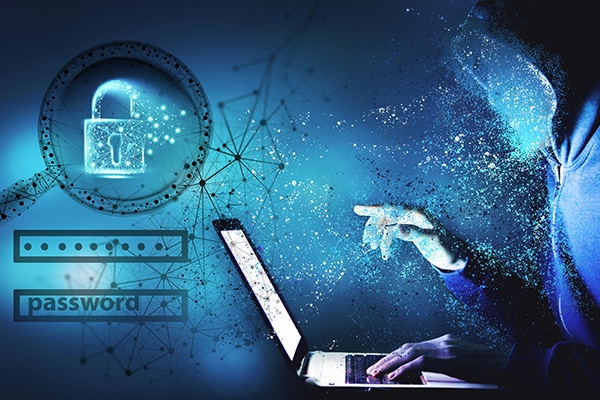Cyber threats are evolving at an alarming pace. Once, cybercriminals needed extensive technical knowledge to execute attacks. Now, artificial intelligence (AI) is changing the game. Hackers no longer need to craft every attack manually. AI-powered systems can launch sophisticated cyberattacks with minimal human intervention.
From phishing emails that sound eerily real to self-learning malware that adapts on the fly, AI is making cybercrime more efficient, scalable, and dangerous. This shift raises urgent questions: How do AI-powered cyberattacks work? What risks do they pose? And how can organizations defend against threats that evolve in real time? Let’s explore how hackers use AI to automate attacks—and what can be done to stop them.
The Rise of AI in Cybercrime
AI is revolutionizing industries like healthcare, finance, and customer service and reshaping cybercrime. Hackers have realized that AI can automate the most time-consuming aspects of an attack. With the right models, cybercriminals can analyze vulnerabilities, craft deceptive messages, and launch large-scale attacks faster. Understanding how AI-powered attacks are created is crucial for defending against them, as these sophisticated threats leverage machine learning to adapt and improve over time.
Traditional hacking requires human input at every step—scanning for weaknesses, writing malicious code, and executing attacks. Today, AI can handle many of these tasks independently. It can analyze vast amounts of stolen data, identify exploitable security gaps, and modify its attack strategies based on best practices. This automation has turned cybercrime into a high-speed, high-volume operation.
The implications are severe. AI is making cyberattacks more effective and more challenging to detect. Organizations that rely on outdated security measures risk being outpaced by AI-driven threats.
How AI-Powered Attacks Work
Hackers are deploying AI in multiple ways. Each technique enhances the scale, precision, and impact of cyberattacks. Here are some of the most common AI-driven attack methods:
AI-Generated Phishing Attacks
Phishing emails have been around for decades, but AI has made them far more convincing. AI-driven phishing tools can analyze public data from social media and emails to craft highly personalized messages. These emails mimic real contacts, making it difficult for users to recognize the scam. Some AI systems can even generate phishing attempts in multiple languages, increasing their reach.
Automated Malware & Ransomware
Traditional malware is often pre-programmed with a fixed set of behaviors. AI-powered malware, however, can learn and adapt. These self-learning programs analyze how antivirus software responds and adjust their strategies to evade detection. Ransomware attacks, in particular, have become more devastating. AI can optimize attack timing, select the most valuable data to encrypt, and even negotiate ransom payments automatically.
Deepfake & Social Engineering Tactics
Deepfake technology allows AI to generate realistic audio and video content. Hackers use this to impersonate CEOs, employees, or even family members in real time. These deepfake scams trick individuals into transferring money, revealing sensitive information, or granting unauthorized access. Once a manual process, social engineering is now being supercharged by AI’s ability to analyze human behavior and craft deceptive interactions.
AI-Driven Password Cracking & Exploit Discovery
AI accelerates password-cracking efforts by testing millions of potential passwords in seconds. Unlike traditional brute-force attacks, AI can analyze user behavior to predict passwords based on personal details. AI scans software for security vulnerabilities, identifying weaknesses faster than cybersecurity teams can patch them.
The Scale and Impact of AI-Driven Cyber Attacks
AI-powered cybercrime is not just theoretical. It is already happening. In recent years, we have seen cyberattacks that leverage AI to maximize their impact. For example:
- AI-driven phishing attacks have bypassed security filters, targeting corporate employees with near-perfect email replicas.
- Malware with AI capabilities has adapted in real-time to evade antivirus software, making detection nearly impossible.
- Deepfake scams have resulted in fraudulent financial transactions worth millions.
The consequences are severe. Businesses face financial losses, reputational damage, and operational disruptions. Governments worry about national security threats. Individuals risk identity theft, fraud, and personal data breaches. As AI continues to advance, these attacks will only become more sophisticated.
The Future of Cybersecurity: Fighting AI with AI
The cybersecurity industry is racing to counter AI-driven threats. Since human intervention alone is no longer enough, organizations must leverage AI to defend against AI-powered attacks. Here’s how:
- AI-Powered Threat Detection: Advanced cybersecurity systems use AI to analyze network behavior, detect anomalies, and identify potential attacks in real time.
- Automated Response Systems: AI can react instantly to threats, isolating compromised systems and preventing further damage.
- Adaptive Security Strategies: AI-driven defenses continuously learn from attack patterns, making it harder for cybercriminals to succeed.
- User Awareness & Training: While AI helps with defense, human awareness is still critical. Organizations must educate employees on AI-driven threats like deepfake scams and AI-generated phishing.
Governments and regulatory bodies are also stepping in. New laws are being proposed to regulate AI use in cybercrime. However, enforcement is a challenge. Cybercriminals operate globally, often beyond the reach of local laws.
Conclusion
AI is transforming cybercrime, making attacks faster, more effective, and harder to detect. From automated phishing and self-learning malware to deepfake scams and AI-driven exploit discovery, hackers are using AI to scale their operations like never before.
The only way to fight back is with equally advanced AI-driven defenses. Organizations must invest in proactive cybersecurity measures, embrace AI-powered threat detection, and stay informed about emerging risks. The digital battleground is shifting, and in this era of AI-driven cybercrime, staying ahead of the attackers is the only way to keep secure.











